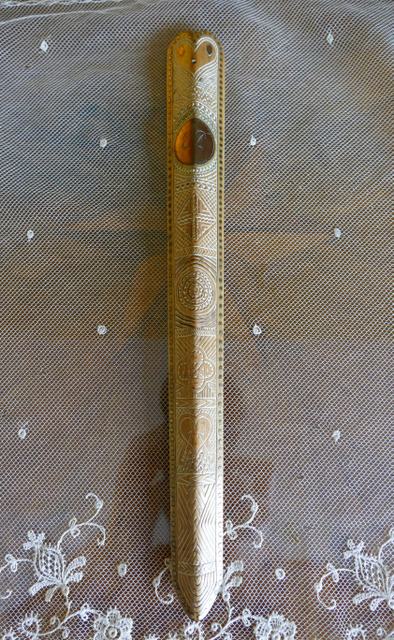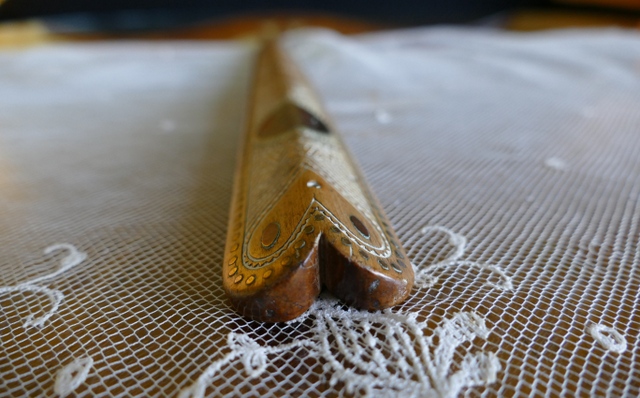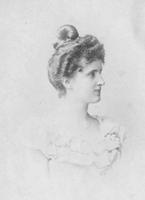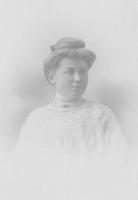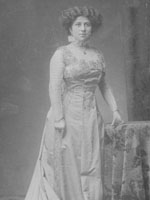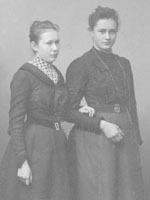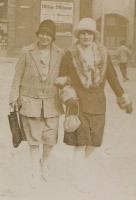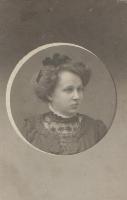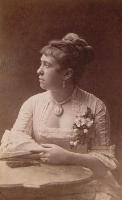- Unterwäsche
- Pantalettes und Negligee, Spanien, ca. 1920
- Lange Unterhosen, Deutschland, 1920er Jahre
- Nachthemd, Deutschland, ca. 1910
- Boudoir-Robe, Amerika, ca. 1875
- Männer-Unterhosen, Deutschland, 1920er Jahre
- Damen-Negligee, 1920er Jahre
- Damen-Unterhose, 1920er Jahre
- Damen-Unterhose, 1880er Jahre
- Damen-Negligee, Frankreich, ca. 1905
- Korsett-Hemd, ca. 1870
- Korsett-Hemd, ca. 1884
- Korsett-Hemd, ca. 1885
- Unterrock mit langer Schleppe, ca. 1905
- Unterkleid für ein Flapperkleid, ca. 1925
- VLADIMIR LOENVISSON Nachthemd, Moskau, ca. 1895
- VLADIMIR LOENVISSON Pantalettes, Moskau, ca. 1895
- Gesteppter-Biedermeier-Unterrock, ca. 1840
- Menstruationsgürtel und Binden, 1920er Jahre
- Pantalettes und Negligee, ca. 1900
- Winter-Unterrock, ca. 1910
- Unterrock, ca. 1855
- Frisierumhang, 1920er Jahre
- Gesundheitsunterwäsche für Kinder, ca. 1900
- SCHIESSER Kinder-Leibchen, Patent 1917
- SCHIESSER Kinderleibchen, Patent 1917
- Fetisch-Korsetthemd, 1910er Jahre
- Unterrock, Deutschland, datiert 1908
- Korsett-Hemd, Frankreich, ca. 1910
- Boudoir-Robe, ca. 1877
- Boudoir-Robe, ca. 1875
- Korsett-Hemd, Madrid, ca. 1904
- Samt-Boudoirjacke, ca. 1924
- Chiffon-Boudoirumhang, ca. 1926
- Zwei Nachthemden, Zwickau, ca. 1900
- Elegante Bett-Jacke, ca. 1890
- Baumwoll-Nachthemd, ca. 1897
- Boudoir-Jacke, ca. 1910
- Baumwoll-Negligée, ca. 1904
- Roter Unterrock, ca. 1900
- Biedermeier Unterrock, ca. 1840
- Korsett-Hemd, ca. 1906
- Korsett-Hemd, ca. 1916
- "Pantalettes" aus Batist und Spitze, ca. 1900
- Unterkleid, ca. 1905
- Unterrock, ca. 1862
- Biedermeier Unterrock, ca. 1830
- GRACE HILL Brust Taille, ca. 1908
- Unterhemd, ca. 1904
- Hochzeitsausstattung, Antoinette Reeve Butler, datiert 1913
- Hochzeits-Miederleibchen oder -Kamisol, ca. 1880
- EMILIO GHEZZI Boudoir-Robe mit Haube, Mailand, 1890er Jahre
- BOUÈ SOEURS Unterhosen, ca. 1916
- DRECOLL Negligé, Paris und Wien, ca. 1912
- Korsetts
- Korsett, Amerika, späte 1810er Jahre
- Sportkorsett und Damenpumphosen, Amerika, 1880er Jahre
- Sportkorsett, Amerika, 1880er Jahre
- FERRIS Sportkorsett, 1880er Jahre
- LEWANDOWSKI Hochzeits-Korsett, Deutschland, ca. 1912
- L’ABEILLE Korsett, Barcelona, ca. 1888
- AU ROYAL Korsett, Madrid, ca. 1904
- Hochzeits-Korsett, ca. 1888
- C.P. À LA SIRÉNE Korsett, San Sebastian, ca. 1890
- KANT RUST Korsett, Amerika, ca. 1894
- THOMSON'S Korsett, Amerika, ca. 1888
- Grünes Korsett, Frankreich, ca. 1895
- Cremefarbenes Korsett, Frankreich, ca. 1895
- Sport- oder Nacht-Korsett, Deutschland, ca. 1905
- SPIRELLA Korsett Druckplatten, England, ca. 1900
- LEFRANC Korsett, Paris, ca. 1900
- RFC á la Princess Korsett, Frankreich, ca. 1907
- AU BON MARCHÉ Korsett, Rom, ca. 1904
- B.L.C. Unterbrust-Korsett, Italien, ca. 1915
- Korsett, Italien, ca. 1906
- Korsett, Amerika, ca. 1812
- Löffel-Schließe-Korsett, ca. 1880
- AU BON MARCHÈ Korsett-Schachtel, Paris, ca. 1890
- Rokoko Korsett-Stab, ca. 1760
- Kinder-Korsett, Frankreich, 1910er Jahre
- WIENER MODE Korsett-Schachtel, ca. 1895
- AU BON MARCHÉ Korsett-Schachtel, ca. 1900
- Mädchen-Korsett, ca. 1890
- FARFALLA Korsett-Schachtel, ca. 1912
- AMERICAN LADY Korsett-Schachtel, ca. 1908
- RÉAUMUR Korsett-Schachtel, ca. 1905
- FÁBREGAS Korsettschachtel, ca. 1903
- TWILFIT Korsett-Schachtel, ca. 1912
- EEKA Korsett-Schachtel, ca. 1900
- Korsett, ca. 1923
- Rokoko Korsett-Stab, ca. 1780
- Korsett-Beutel, ca. 1908
- Korsett-Beutel, ca. 1896
- Taillen-Korsett, R. Wladika, Wien, 1920iger Jahre
- Viktorianisches Taillenkorsett aus Frankreich, ca. 1890
- Pariser Hochzeits-Korsett, Au Bon Marché, ca. 1880
- Luxuriöses Wiener Korsett, ca. 1890
- Besticktes Abendkorsett, ca. 1897
- Elegantes victorianisches Korsett, ca. 1895
- Korsett der Marke „Triumph“, ca. 1912
- Au Royal Corset, Spanien, ca. 1910
- Edwardianisches Schwangerschafts-Korsett, ca. 1906
- Ferris Korsett-Büste und Korsett, ca. 1890
- Au Royal Korsett, pink bestickt, Spanien, ca. 1908
- Au Royal Korsett, blau bestickt, Spanien, ca. 1908
- Viktorianisches Unterbrust-Korsett, ca. 1900
- Sommer-Korsett, ca. 1890
- Verführerisches Rotes Viktorianisches Korsett, ca. 1880
- Extravagantes Viktorianisches Korsett, ca. 1895
- Außergewöhnliches Französisches Korsett, ca. 1900
- Männerkorsett, ca. 1900
- Sommerkorsett, Paris, ca. 1910
- Weißes Ferris-Korsett, ca. 1890
- Modell-Korsett, Pariser Weltausstellung 1889
- R & G Jacquard Seide Korsett, ca. 1895
- Exzeptionelles Korsett, patentiert 1879
- R & G EMPIRE Taillenkorsett, ca. 1890
- Hochzeitskorsett aus Seide, Warner’s, ca. 1895
- WORTH Et CIE. Korsett, ca. 1890
- Rokoko Korsett, 1780er Jahre
- Viktorianisches Taillenkorsett, ca. 1899
- JS Hochzeitskorsett, ca. 1880
- LA HURI Schwangerschafts-Korsett, ca. 1885
- KABO Korsett, ca. 1901
- PD Korsett, ca. 1888
- LAFAYETTE Hochzeitskorsett, ca. 1900
- MADAME GRACE Korsett-Büste und Korsett, ca. 1904
- Frühes Rokoko Korsett, Frankreich, ca. 1720
- ELL-ARR "Dermathistic"-Korsett, ca. 1888
- FERRIS Korsett und Korsett-Büste, ca. 1900
- SCHILLING Korsett, ca. 1894
- Hochzeitskorsett aus adeliger Provenienz, Italien, ca. 1888
- Hochzeitskorsett, Italien, 1880er Jahre
- Abendkorsett, Frankreich, 1880er Jahreq
- LE MERVEILLEUX Korsett, Paris, 1880er Jahre
- Korsett, Amerika, ca. 1810
- Gesäßauflagen & Bustles
- Spiralen-Gesäßauflage, ca. 1870-1885
- Draht-Gesäßauflage, 1880er Jahre
- NEW QUEEN SIZE Gesäßkissen, ca. 1895
- Kleines Gesäßkissen, ca. 1890
- Po (Bustle) Kissen, ca. 1890
- Spitzen-Gesäßauflage mit Spiralen, ca. 1890
- Hummerschwanz-Tournüre, England, 1880er Jahre
- Dreifache Gesäßauflage in Schwarz, ca. 1890-1895
- Kleine Spiralen-Gesäßauflage, ca. 1890-1899
- Bustle-Kissen No. 122, ca. 1890
- Viktorianisches Draht-Bustle oder Tournüre, ca. 1880
- Mit Leinen bezogenes Draht Bustle, ca. 1880
- Bustle oder Gesäßauflage mit Spiralen, ca. 1870-1880
- Spitzen-Gesäßauflage mit Spiralen, ca. 1880
- Krinolinen
- Krinoline 1, Amerika, 1870er Jahre
- Krinoline 2, Amerika, 1870er Jahre
- Krinoline 3, Amerika, 1870er Jahre
- THOMSON'S Empress Krinoline, 1860er Jahre
- Krinoline, England, ca. 1862-1870
- Krinoline, Amerika, ca. 1860-1865
- W.T. HOPKINS Krinoline, Amerika, ca. 1860-1865
- Krinoline, 1870er Jahre
- Krinoline, ca. 1865-1867
- Thomson’s „Crinolette“, ca. 1880
- THOMSON'S Krinoline Nr. 272, ca. 1865
- THOMSON'S Zephrina Krinoline, datiert 1868
- ZEPHYA Krinoline, 1860er Jahre
- Strümpfe
- Bestickte Strümpfe, ca. 1880
- Strumpfhalter, ca. 1890
- SPHERE Stumpfhalter, England, 1920er Jahre
- Strümpfe, ca. 1885
- Hochzeits-Strumpfbänder, 1910er Jahre
- Biedermeier-Strümpfe, Deutschland, datiert 1829
- Männer-Seidenstrümpfe, Frankreich, ca. 1790
- Strümpfe, Deutschland, datiert 1850
- Seidenstrümpfe, Deutschland, ca. 1928
- Sockenhalter, 1910er Jahre
- Braune Männer-Strümpfe, ca. 1910
- Gestreifte Strümpfe, ca. 1900
- BUSTER BROWN Jungenstrümpfe, 1920er Jahre
- Gamaschenstrümpfe, ca. 1910
- Gerippte Kinderstrümpfe, 1920iger Jahre
- Edwardianische Seiden-Strümpfe mit Lochmuster, ca. 1912
- Seidenstrümpfe, 1920iger Jahre
- Boudoir Hauben
- Boudoir-Haube für Schneckenfrisuren, ca. 1910
- Bedruckte Boudoir-Haube, ca. 1900
- Boudoir-Haube, ca. 1900
- Haartuch, ca. 1890
- Boudoir-Haube, ca. 1890
- Fliederfarbene Boudoir-Haube, 1920er Jahre
- Gelbe Boudoir-Haube, 1920er Jahre
- Bett-Haube, ca. 1917
- Boudoir-Haube, ca. 1910
- Boudoir-Haube, England, 1920er Jahre
- Boudoir-Haube, ca. 1928
- Boudoir-Haube, ca. 1910
- Betthaube, ca. 1905
- Betthaube, ca. 1910
- Fliederfarbene Boudoir-Haube, 1920iger Jahre
Kontakt
Rokoko Korsett-Stab, ca. 1780
Rokoko Korsett-Stab, ca. 1780
Yet from the mid-sixteenth century until the early nineteenth century, the busk was a commonly known part of female dress: an independent, interchangeable part of the bodies and stays (corsets). It consisted of a long piece of a stiffened substance that was placed into a stitched channel between layers of fabric in the front of the bodies or stays and secured into place at the bottom by a small piece of ribbon called the ‘busk-point’.
The busk was often given to a women as a love token from her suitor or lover, with romantic personal messages carved upon it. This busk was (maybe) carved by a professional as a commissioned gift. Elaborately decorated with chip carving, including heart, geometric and petal patterns. One copper inset panel show the inscription: C.L. Copper nails on lateral.
Herkunft: England
Material: Holz und Kupfer
Länge: ~ 32 cm


